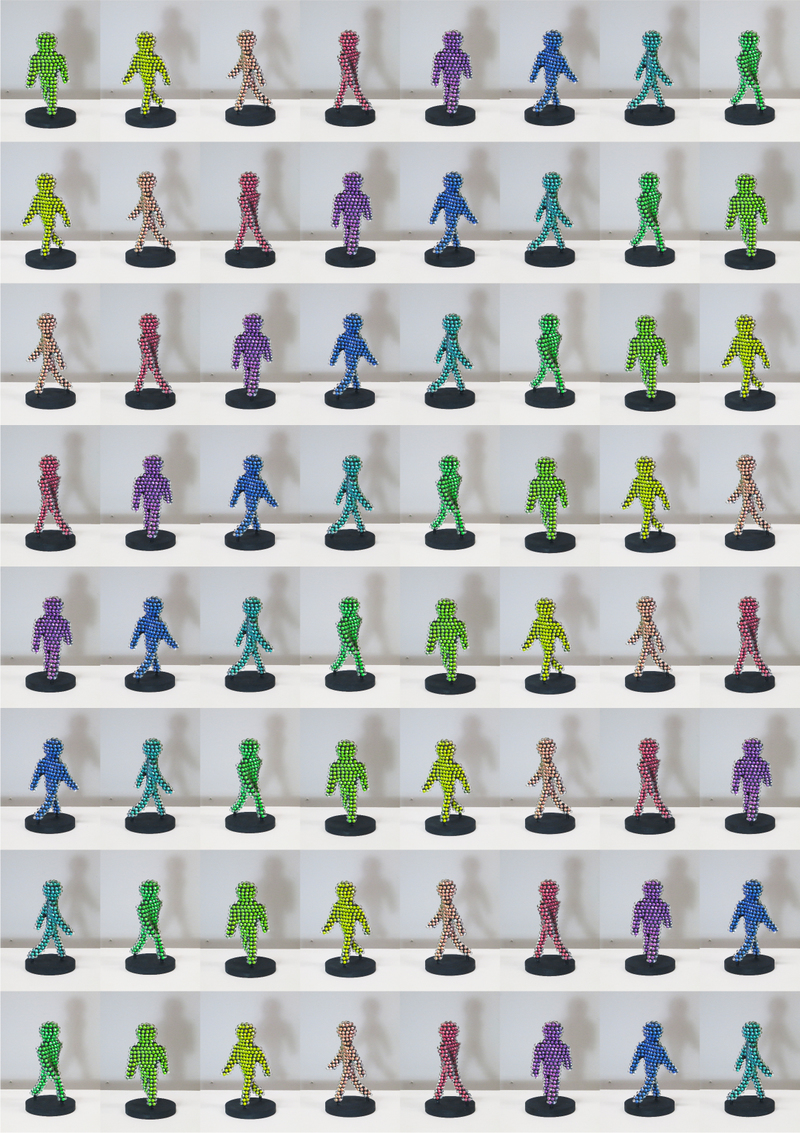Interviews

Color-changing Unit Modules Put Beauty in the Eye of the Beholder (Part 3)
Jun Fujiki
At the root of Jun Fujiki’s work lies the desire to create a new universal principle. To this day he continues his search, looking for such a principle to pass down to younger generations.
Interviewer & Japanese Writer: Yamamoto Takaya; Translation & Editing: Matthew Cherry
During his time in the INNO-vation Program, Jun Fujiki looked for a way for his perspective-based color-changing modules to change color based on the passage of time as well. He continued to work on this even after his challenge period had ended, and has now shifted into working on how to make the colors change based on distance.

“In my mind, the method for changing the colors based on perspective has already been completed. If I can take the principle behind that and combine it with a second principle that changes the colors based on distance, a new type of virtual space will be born, allowing one to experience something similar to VR with their naked eyes,” Fujiki explained.
Fujiki’s passion for creating doesn’t stop with the modules. Through collaboration with other researchers, he’s looking into discovering new creation worldviews.
In the retro days of the Nintendo Entertainment System, there were many methods of showing players ideas that weren’t based in reality while maintaining a sense of believability. In the classic game Mario Bros., characters that ran off the right side of the screen would suddenly appear on the left side. In The Legend of Zelda, the protagonist Link’s perspective changes based on where the player is moving, but most other characters in the game are shown from an above perspective, creating a natural mixture of different viewpoints.
“Game developers have always created within a set of restrictions, expressing the impossible in ways we can naturally perceive them. I’ve been speaking with other researchers about how these different environments being treated as natural is based on people’s worldviews. Older science fiction also influences today’s engineering research, so there’s a similarity between the two. These worldviews later lead to new research, which in a way makes them the mothers that give birth to new possibilities.”
Although Fujiki has a wide range of interests, at the center of them all lies the desire to create a new fundamental principle. “Back when I was working with 3DCG development, I had an interest in algorithms. Even within algorithms lies an aspect that their fundamental principles can be used by anyone, right? I hope that the development of the unit modules for 3D object creation, as well as the research surrounding different worldviews, will be a connecting point in the discovery of a new fundamental principle that can be used for generations after mine,” Fujiki said.
Despite sometimes hitting a wall, Fujiki is continuing his research and development. “There are people I know that are doing truly incredible things but weren’t accepted into the INNO-vation Program. I’d like to say to anyone out there that although it’s certainly a good thing to be accepted into the program, don’t get discouraged if you aren’t and keep continuing your work,” he expressed as a message to those thinking of applying for the program. Fujiki knows that if he continues to work hard, a world that he has yet to uncover is waiting for him on the other side.
Jun Fujiki’s Profile

